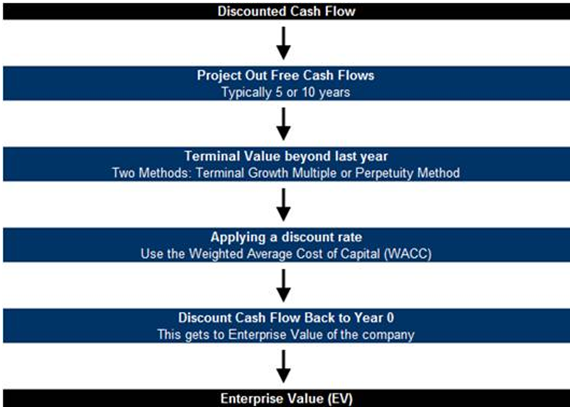What is the difference between discounted and undiscounted cash flows
Post on: 16 Март, 2015 No Comment

Related Topics
The difference is the time value of money . one of the key concepts of Finance .
Let's say that I contract to pay you $100 per year for ten years, with the first payment due today, the next one due a year from today, and so forth. The question that arises is how much is that whole contract worth today ?
Using un-discounted cash flow analysis. the math is very simple: 10 payments x $100 means that flow of cash over ten years is worth $1,000 right?
But let me ask you a question: would you be willing to pay me $1,000 in cash today to purchase that contract? Somehow, I doubt it. Why? Because what would be your motivation to give up the cash in your hand now, in exchange for getting the last of it back a decade from now?!
So, if the actual dollars are the same, but you value my promised $1,000-over-a-decade less than you value the $1,000 already-in-your-hand, our goal is to figure out what that contract is really worth. So how do we do that?
We start by calculating a discount for the value of each individual payment (that is, we figure out how much less than $100 this year's payment is worth to you, then we do it again for next year's, and so forth) and then we add up all those numbers. Those payments happening every year are considered a flow of cash. So our analysis of that flow—taking into account the discounts in value of each of the payments—is called the discounted cash flow analysis .
Now that we think about, how can you figure out exactly how much less $100 next year is worth to you than $100 right now? The best way is to think about what you would do with that money if you had the use of it for a year. In the financial context we're talking about, we can use as a proxy for this some other investment available to you that will generate a certain return over that period. Let's say that you know that the best return you could get on your $100 today would be to put it in the stock market, where you are convinced that you could get a 10% annual return. The corollary of this, therefore, is that by not having that $100 this year, you would not get that 10% return. Therefore, we have established that your discount rate is 10%.
So now let's do the math, seeing what each of those annual $100 payments is really worth to you, knowing as you do that if you had it now instead of in the future, you could make 10% each year on it. We call this the net present value of that particular payment, and can think about it this way: The first payment comes in today, and you can turn around and put it right to work, so there's no discount. That means the value of that first payment to you is the full $100 .
The second payment, however, is a year away, and by that point you know that you could have earned 10% on it, so to calculate its present value, we use the formula:
Substituting our numbers, we get $100 (cash to be received) divided by [1 + 10%], which reduces to 100/1.10, which equals $90.91 .
For the third year it gets slightly trickier, because now we have to calculate the discount twice. because it's two years away. We do that by squaring the discount, using the following formula:
Plugging in our numbers again, this time we get 100/[1.1]^2, = 100/1.21 = $82.64. Doing the same thing for each year in the series, the different numbers look like this (remember, we're getting paid at the beginning of each year):
As you can see, this means that while the un-discounted cash flow analysis would have you thinking that you'd be getting $1,000 over the ten years (which you would, technically), a discounted cash flow analysis using your own discount rate shows that the value of that whole stream of cash flows—right here, right now—is in reality worth to you only $675.90 .
The full mathematical calculations to figure all this out are built into spreadsheets like Microsoft Excel. and financial calculators like the HP12C. There's also a very nice interactive online NPV calculator (from which the above table was generated) at Calculator Soup .
You can see the detailed formula (with a good explanation) in the Wikipedia article on Discounted cash flow :














